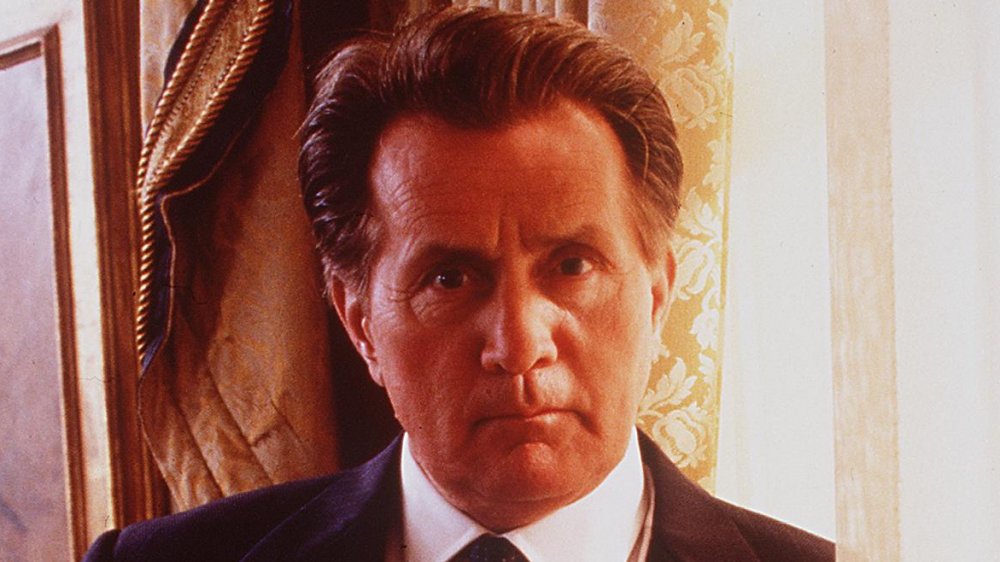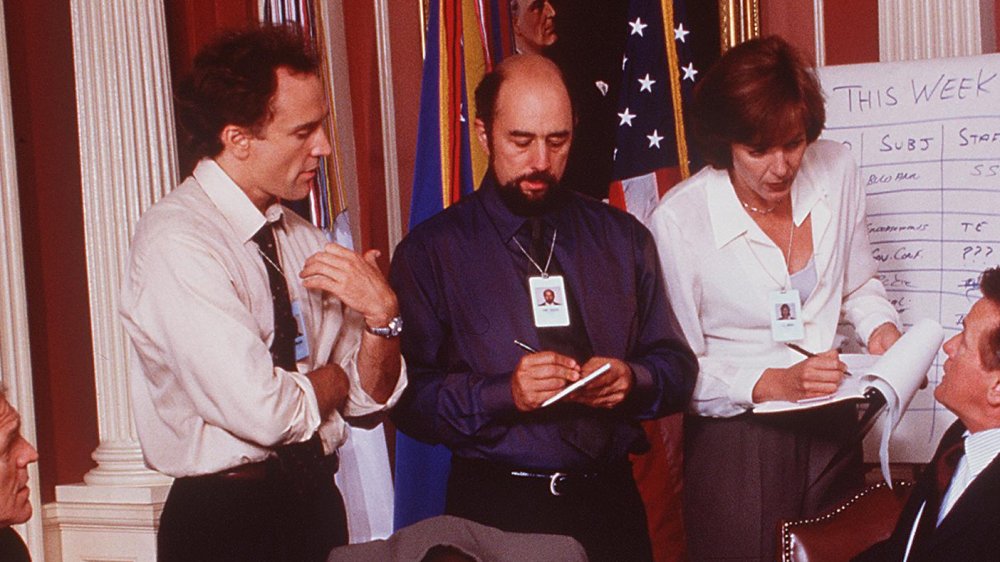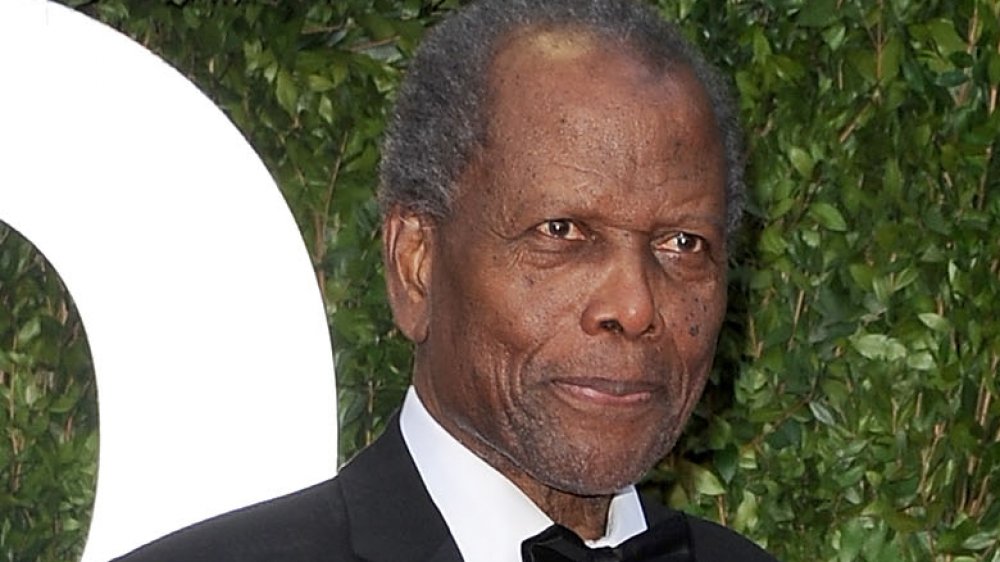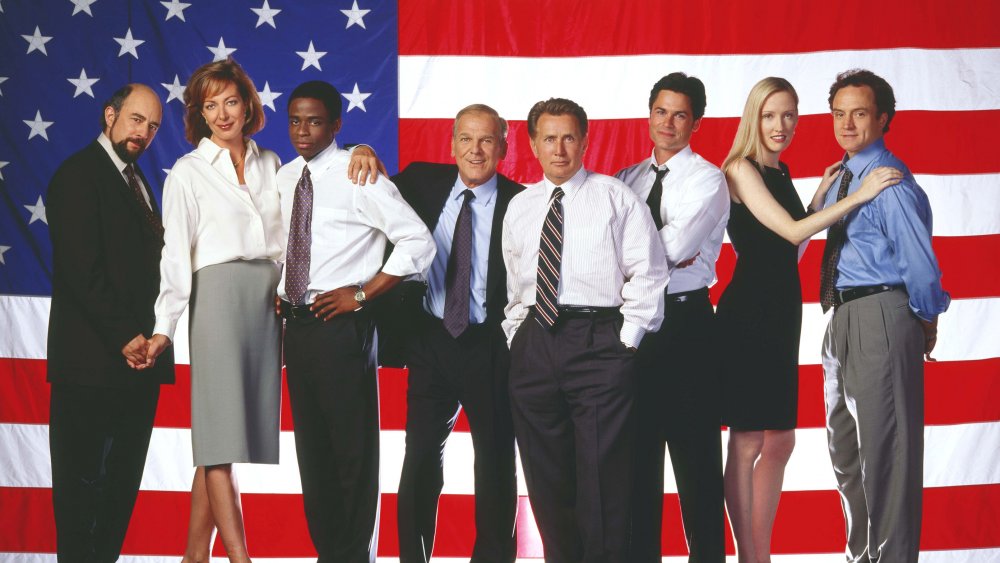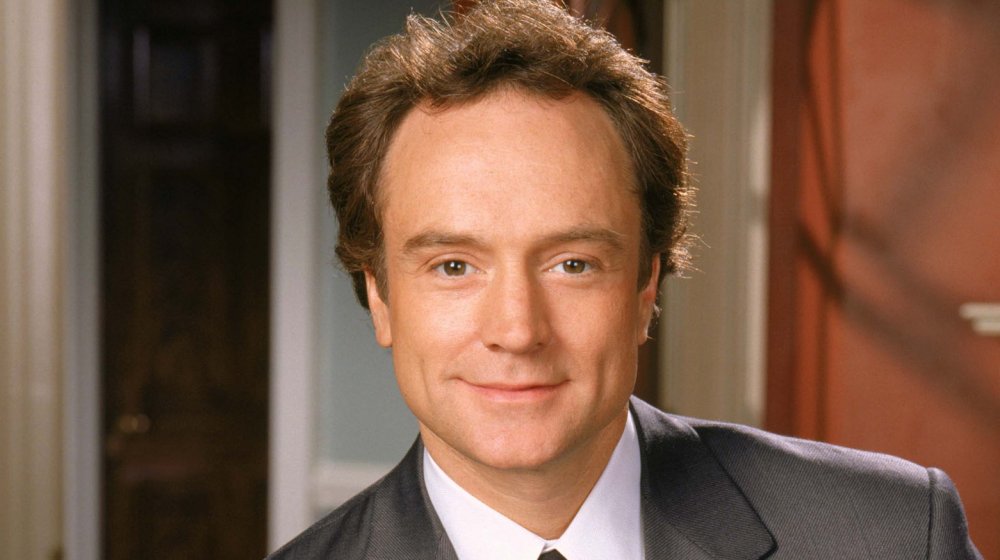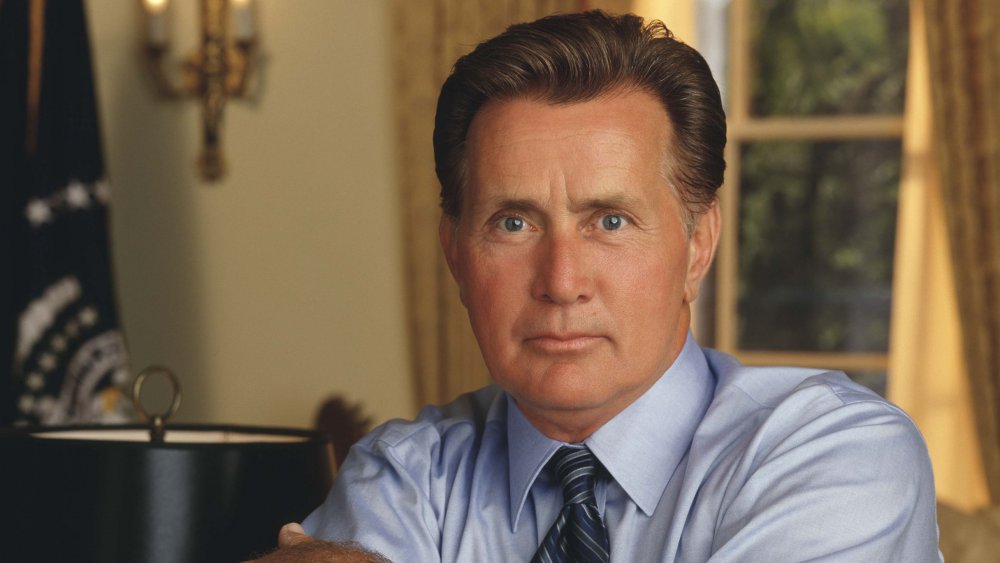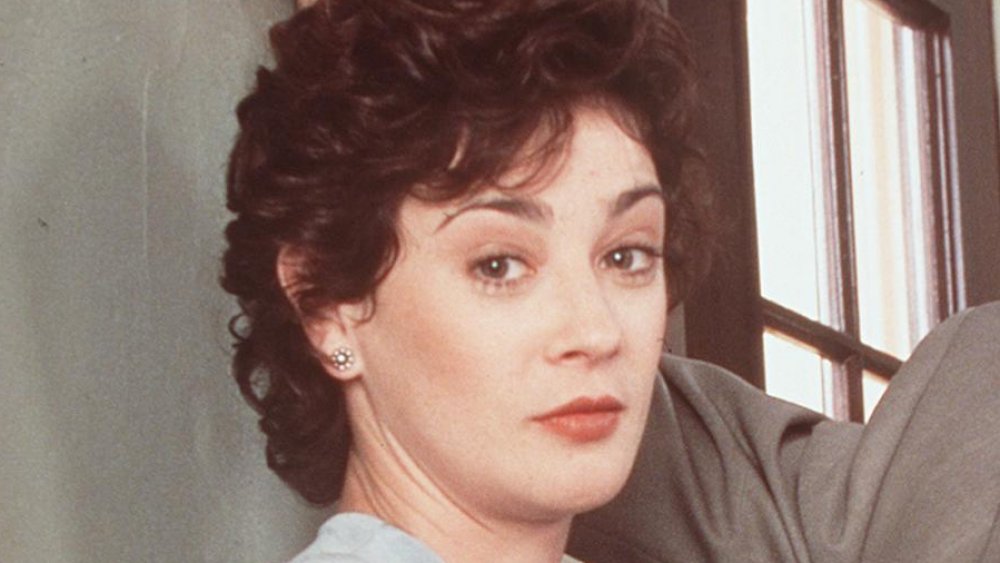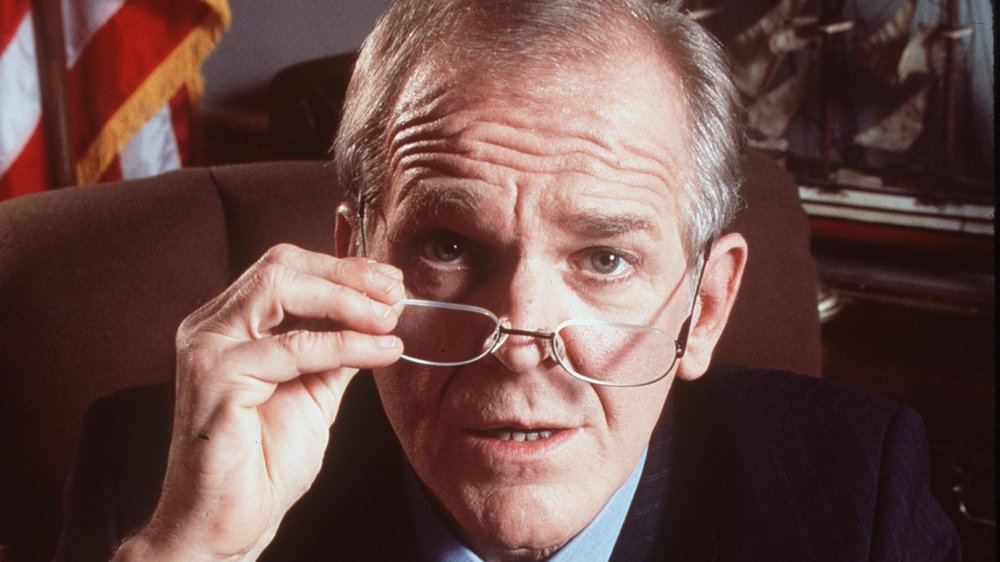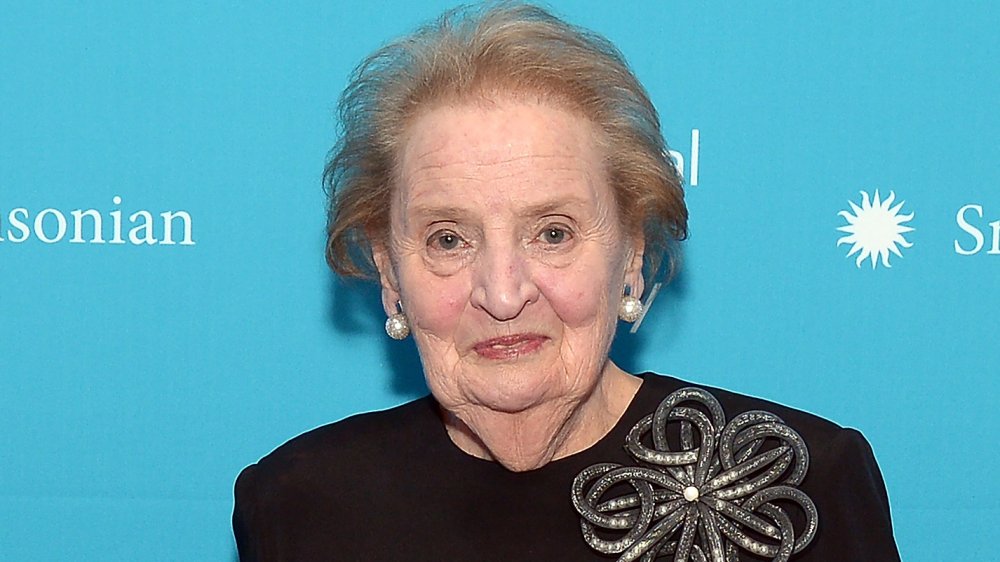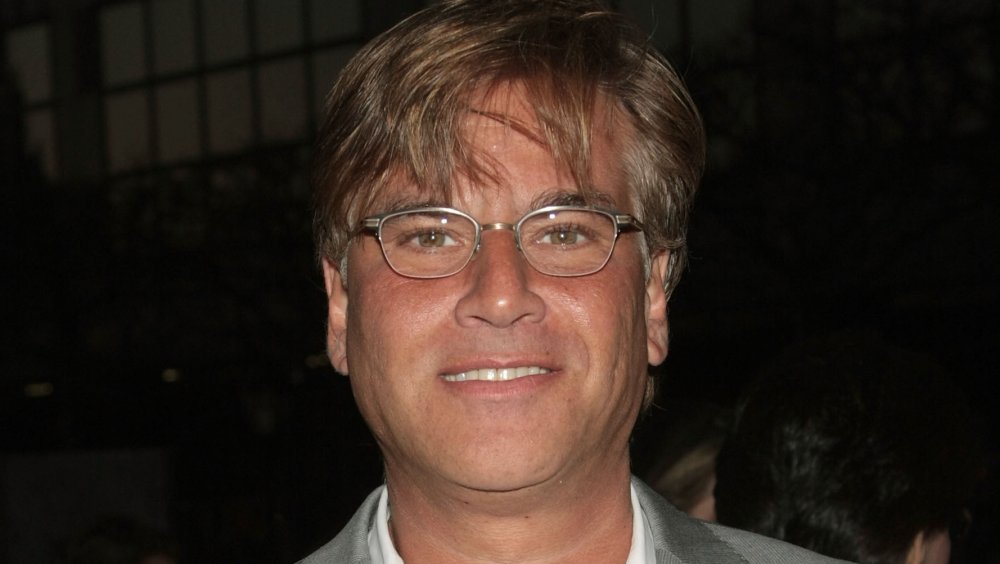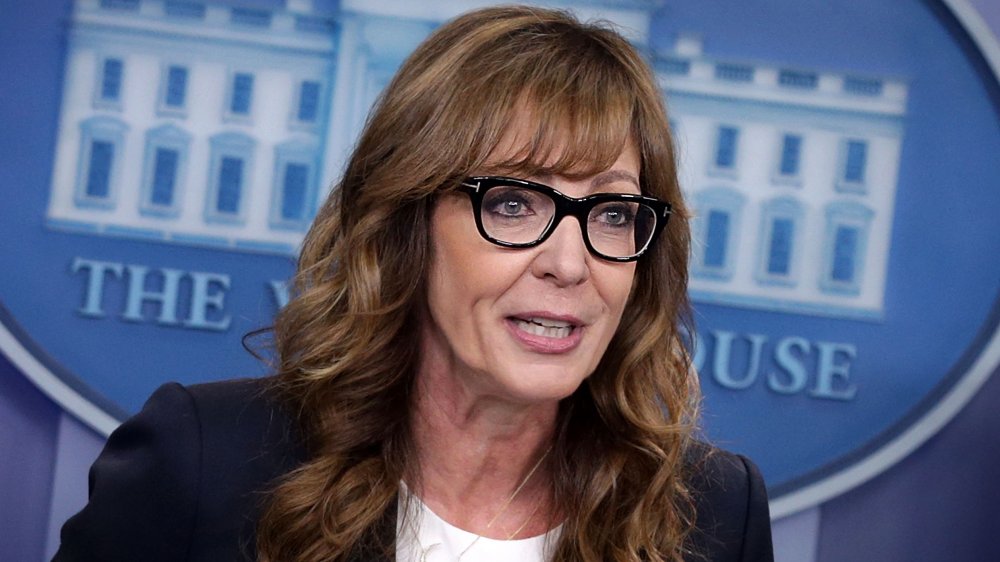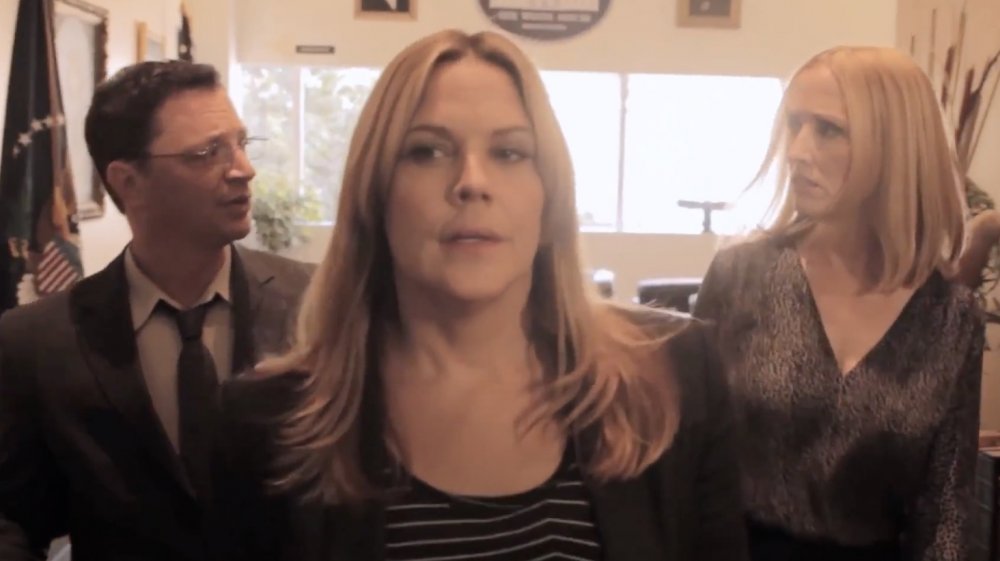The Untold Truth Of The West Wing
From 1999 to 2006, when America optimistically stood at the beginning of a new millennium, The West Wing offered a utopian but still highly dramatic look at what democracy could be. The NBC series gave viewers an irresistible peak behind the curtain of government and a look at how the great American experiment worked, detailing a hectic yet idealistic world of how the White House operates on a day-to-day basis.
And it certainly wasn't a one-person job on The West Wing. Assisting and guiding the wise, tough, and compassionate President Josiah Bartlet (Martin Sheen) were a number of advisors, officials, employees, and family members. The show walked-and-talked its way to four straight Emmy Awards for Outstanding Drama Series while also earning trophies for cast members who brought their challenging, flawed characters to life, including Bradley Whitford, Richard Schiff, Allison Janney, and Alan Alda. Beyond that, The West Wing was as popular and influential as it was acclaimed, and it established creator Aaron Sorkin as a master of quality, thoughtful television. Here's an inside look at the inside-the-White House TV classic, The West Wing.
NBC didn't like The West Wing at first
When Aaron Sorkin came up with the idea for The West Wing, he wasn't yet the TV creator superstar he is today. He was primarily known as a screenwriter, scoring a couple of Golden Globe nominations for penning A Few Good Men and The American President, and his dramedy Sports Night hadn't yet aired. This is to say that Sorkin had to jump through a few hoops to get NBC to agree to order The West Wing to series.
"My sense was that the network executives were respectfully underwhelmed," Sorkin told The Hollywood Reporter of the reaction to his pilot script in 1998. But in early 1999, those suits were replaced by executive Scott Sassa, who liked the script and ordered it filmed. Peter Roth of production company Warner Bros. had reservations, however, claiming that every show every set in Washington, D.C., had failed.
At first, it looked like The West Wing would face the same fate. But while the pilot did okay with focus groups in general, it performed very well with certain demographics. As Sorkin explained (via EW), it tested well with wealthy, educated viewers and people with an internet connection (which was still a new thing in the '90s). Production company Warner Bros. invented those categories to persuade NBC into a purchase. And it worked. The network greenlit the show, realizing it could sell ad time to free-spending dot com bubble companies.
The West Wing, starring ... Sidney Poitier?
The West Wing would only have worked if the actor portraying Josiah Bartlet was likable and possessed presidential gravitas. Producers found the right performer in Martin Sheen, veteran star of lauded films like Apocalypse Now and Wall Street. But amazingly, Sheen wasn't producers' first choice. As it turns out, they attempted to land Academy Award winner Sidney Poitier.
However, talks broke down, and the next name on the list was double Oscar recipient Jason Robards. At the time, the actor's health was on the decline, and the creative team realized he wouldn't be up for the rigors of shooting a weekly series. Hal Holbrook, best known for his live performances as Mark Twain, and John Collum of Northern Exposure auditioned for the part, but before either could be assessed, producer John Wells suggested Sheen, whom Sorkin had worked with on The American President. Sheen read the script, loved it, and agreed to star. And at the outset, it was a small part. The president wasn't set to appear regularly, but test audiences loved Sheen so much that producers bumped up his involvement from four to 13 initial episodes.
The West Wing cast was almost very different
The real-life president of the United States has a large staff of advisors, cabinet secretaries, and other employees, and so The West Wing necessarily had to have a large ensemble cast. Plenty of actors came and went from the series over its seven-year run, but nonetheless, The West Wing had one of the most impressive and carefully crafted ensembles in TV history. Producers and casting directors had tough choices to make about actors, and it might've wound up a totally different show had they made different selections.
Eugene Levy, the star of comedies like Best in Show and Schitt's Creek, nearly beat Richard Schiff for the role of communications director Toby Ziegler, while CCH Pounder of ER and The Shield almost wound up with the part of press secretary C.J. Cregg, which would win Allison Janney four Emmy Awards. Janel Moloney auditioned for that part, too, but creator Aaron Sorkin liked her so much that he gave her the minor role of assistant Donna. Future Mad Men and The Handmaid's Tale star Elisabeth Moss found her breakthrough role as presidential daughter Zoey, narrowly beating The Wonder Years' Danica McKellar. And early in the show's development, chief of staff Leo McGarry was named Leo Jacoby, and Sorkin wanted Taxi actor Judd Hirsch to play him.
How the characters got their names
Writers can and do pull from anywhere when they need to name the characters in the TV show they created. The West Wing sprang from the mind of screenwriter Aaron Sorkin, and he pulled from a wide variety of sources to give the show's characters their unique and memorable monikers.
Sorkin found the name Josiah Bartlet, the president of the United States as portrayed by Martin Sheen, by looking to real political history. Josiah Bartlett represented New Hampshire as a delegate to the Continental Congress in the 1770s and 1780s, and he was a signer of the Declaration of Independence. Deputy Chief of Staff Josh Lyman, played throughout the run of the show by Bradley Whitford, was named after a character in Garry Trudeau's politically minded comic strip Doonesbury. Debuting in 1993, that Josh Lyman also worked in the White House, as a deputy cabinet liaison. And finally, Danica McKellar portrayed public relations writer Elsie Snuffin in eight episodes of The West Wing in 2002 and 2003. Sorkin most likely got that very singular name from a cast member of his previous show, Sports Night. In the series, actress Kayla Blake portrayed TV producer Kim, and in real life, her real name is Elsie Sniffen, which, come on, can't be a coincidence.
The West Wing's set should look familiar
What with its expansive sets depicting the inner sanctum of the White House, location shoots, a large cast, big paychecks for creator and chief writer Aaron Sorkin, and fees paid to production companies, The West Wing was a very expensive show to make. Going into its fourth season in 2002, the show carried a $2.7 million per episode price tag, according to Entertainment Weekly. One other major expense for the series? Renting out the elaborate and detailed Oval Office set. The presidential work chambers weren't purpose built for the show, but instead, the room was on loan from Castle Rock Entertainment, which made the set for the 1995 movie The American President (which coincidentally was written by Sorkin). Before The West Wing took residence in this fake Oval Office, the same one was used, with some minimal touch-ups, for the movies Nixon and Independence Day.
And as The West Wing recycled the set from The American President, another political program recycled props and decorations from The West Wing. Scandal, which aired on ABC from 2012 to 2018, depicted the controversial presidency of Fitzgerald Grant, and it utilized leftovers from the Bartlet Oval Office. "Many of the original pieces of furniture and art we got from ABC for the pilot were also used in The West Wing," a representative from Scandal's art department told Us Weekly.
Welcome to Mandyville
There were so many characters on The West Wing, particularly in its debut in 1999. But not all of those White House staffers and the people who portrayed them stuck around until the end of the series in 2006. In season one, Moira Kelly played Mandy Hampton, a media consultant for the Bartlet administration who didn't get along with Chief of Staff Josh Lyman (Bradley Whitford), who just so happened to be her ex-partner. In season two, Moira Kelly didn't play anyone at all on The West Wing because she left the series. How did the show's writers get rid of the Mandy character? They didn't, really. When the second season started, she simply wasn't around the White House anymore. Her disappearance was never explained, and she was never even mentioned again.
Mandy Hampton was a casualty of an evolving series. As Sorking explained to The Hollywood Reporter, "Moira was a joy to work with, a total pro who understood as time went on that for whatever reasons — and those reasons had nothing to do with her considerable talent — it just wasn't working." When a similar, sudden disappearance befell other West Wing characters like Sam Seaborn, Joe Quincy, and Ainsley Hayes, fans of the show labeled the phenomenon "going to Mandyville."
John Spencer's death changed the course of the show
As a recovering alcoholic and former secretary of labor who became a trusted advisor to President Bartlet, Leo McGarry was complex. West Wing producers recruited longtime TV performer John Spencer to play him, and the character received a promotion of sorts in the show's seventh and final season. With the Bartlet era coming to an end, dynamic presidential candidate Matt Santos (Jimmy Smith) picked the seasoned and experienced McGarry to be his running mate. The pair won the election in an April 2006 episode, and McGarry was named the country's incoming vice president. Tragically, he died of a heart attack in his hotel room on election night, off-screen, right before the polls closed.
Sadly, real-life events forced The West Wing's writers to institute that devastating twist, as John Spencer died in December 2005, suffering a fatal heart attack a few days before his 59th birthday. The actor's death not only changed his character's fate but the series-capping election of The West Wing. Prior to Spencer's passing, the show's writers had decided that the Democratic ticket of Santos and McGarry would lose to the Republican offering of Arnold Vinick (Alan Alda) and Ray Sullivan (Brett Cullen). West Wing writer and producer Lawrence O'Donnell believed that it would be too sad and too tough on viewers to have a well-liked character die and have him fail to win the election, so the storyline was reversed.
Real politicians offered input to The West Wing
In the way white-collar employees may scrutinize The Office or doctors examine medical dramas, real-life White House staffers and political figures grew mildly obsessed with The West Wing during its original run, and some weren't shy about sharing their opinion with the show's creative team.
Near the end of the series' first season, the production shot exterior footage in Washington, D.C., and creator and producer Aaron Sorkin was summoned to the office of Sandy Berger, at the time the national security advisor in President Bill Clinton's administration. "He wanted to know why there was no national security advisor on the show," Sorkin told The Hollywood Reporter. "I promised him that I'd take care of that," and sure enough, it wasn't long before Anna Deavere Smith joined The West Wing as Nancy McNally, President Bartlet's national security advisor.
The next night, the show captured footage on a street in D.C.'s Georgetown neighborhood. A local resident approached the barricades set up by production, producer Kevin Falls said at the 2017 ATX Festival (via EW) and asked to speak to directors. That woman was Madeline Albright, sitting secretary of state. She asked, "How come you don't do more stories about the secretary of state?"
Aaron Sorkin left the show and didn't look back
The West Wing is Aaron Sorkin's baby. A prolific playwright and screenwriter with a unique style (dialogue-heavy scripts with lines delivered quickly), he created The West Wing and wrote or co-wrote almost every single episode of the show's first four seasons. It was something of a surprise then when he abruptly quit the series in May 2003. Taking executive producer and frequent episode director Thomas Schlamme with him, Sorkin said in a statement (via The New York Times) that he "had the best job in show business for four years" and that he'd "never forget that." He didn't give a reason for his departure, but West Wing insiders said the show suffered from budget problems and slipping ratings while Sorkin was suffering burnout.
In 2016, Sorkin told an audience at the ATX Festival (via Variety) that immediately after he quit, Seinfeld co-creator Larry David (who'd left his show midstream) recommended he no longer watch The West Wing. Sorkin ignored him and tuned in to the first episode of the show's fifth season. "It felt like I was watching someone make out with my wife — it felt horrible," he said. At that point, Sorkin took David's advice and never watched The West Wing again.
A bit from The West Wing was adopted by a real-life president
Almost always a dramatic series, albeit an earnest and mostly wholesome one, The West Wing did have its comic moments, none funnier and stranger than "Big Block of Cheese Day." Figuring into the plot of the 1999 episode "The Crackpots and These Women" and 2001's "Somebody's Going to Emergency, Somebody's Going to Jail," the event is named after the time President Andrew Jackson put a two-ton block of stinky cheese in the White House foyer and invited the public to come on in and eat it. The Bartlet administration's spin is that they invite in overlooked groups to have an audience with the president and his staff, but it only seems to bring in fringe elements, such as a UFO truther and a group that wants to build a highway for wolves.
Inspired by the spirit of Big Block of Cheese Day, both the original President Jackson incident and the gentle mockery of it on The West Wing, President Barack Obama instituted the practice in 2014. Staffers in the Obama administration didn't let strangers into the White House, but they were made available on social media to answer questions or listen to concerns from regular Americans.
Will The West Wing ever return?
While every show from Twin Peaks to Murphy Brown has returned to television in the past several years, The West Wing isn't among them, ending seemingly for good in 2006. NBC has certainly tried to reboot it. Bob Greenblatt, the network's head of entertainment, told Deadline in 2017 that he'd pestered creator Aaron Sorkin to do it. "I keep saying to him, 'Do you want to do The West Wing again, wouldn't it be great to do it?' He says, 'You know I love that show and some day I'd love to revisit it, but it's not going to happen right now.'"
Until Sorkin deems it to be the time, fans will have to content themselves with two West Wing-themed experiments in civics. In 2012, the cast shot a four-minute video to promote Michigan judicial candidate Bridget Mary McCormack, sister of West Wing cast member Mary McCormack. And in 2020, the cast will come together once again in service of an election, when A West Wing Special to Benefit When We All Vote hits HBO Max. In order to raise awareness of Michelle Obama's voting advocacy organization When We All Vote, the special will feature a staged reading of the 2002 episode "Hartsfield's Landing."
Sorkin does have a seed of a revival idea, though. In 2017, he told The Hollywood Reporter that he envisions Sterling K. Brown as a president who recruits the retired President Bartlet to help him through "the threat of war or something,"
